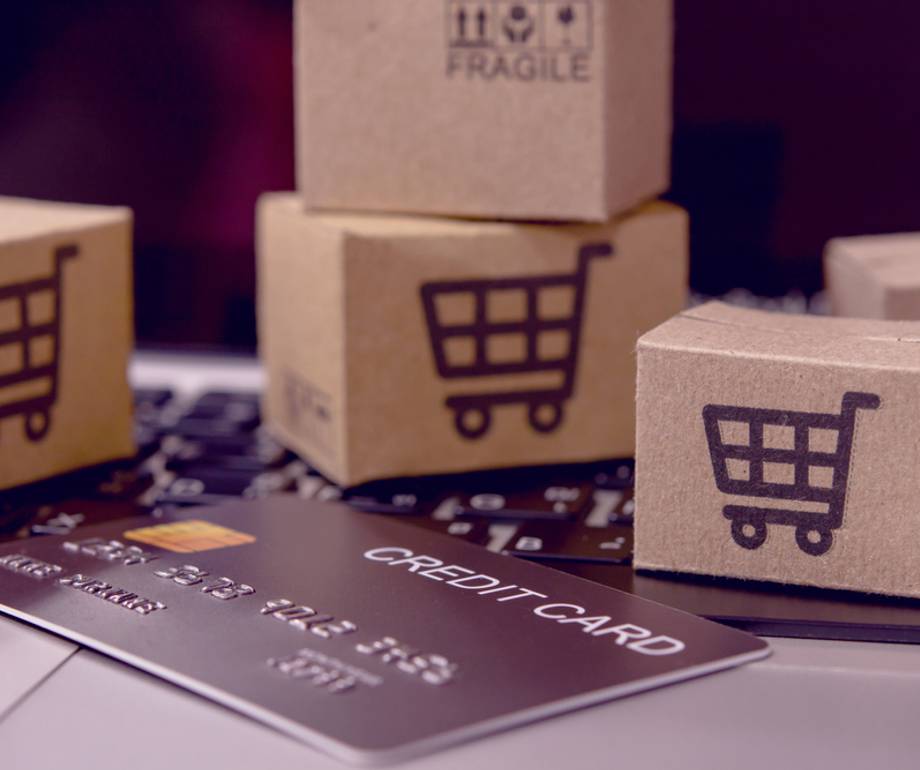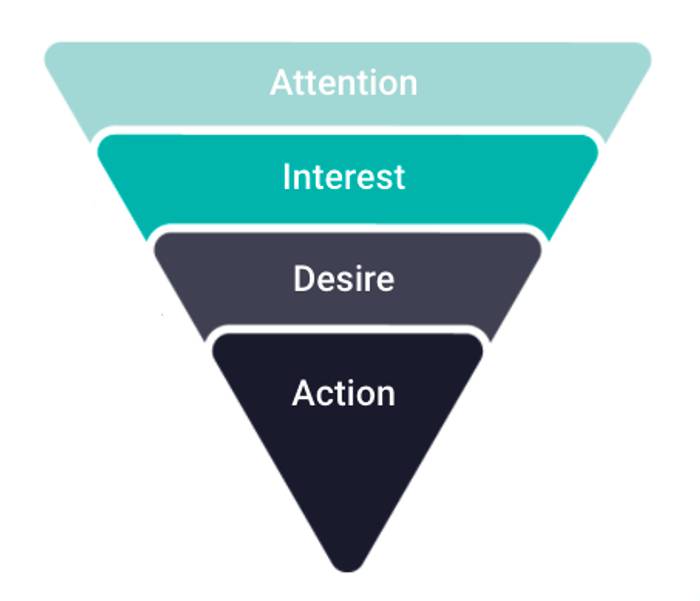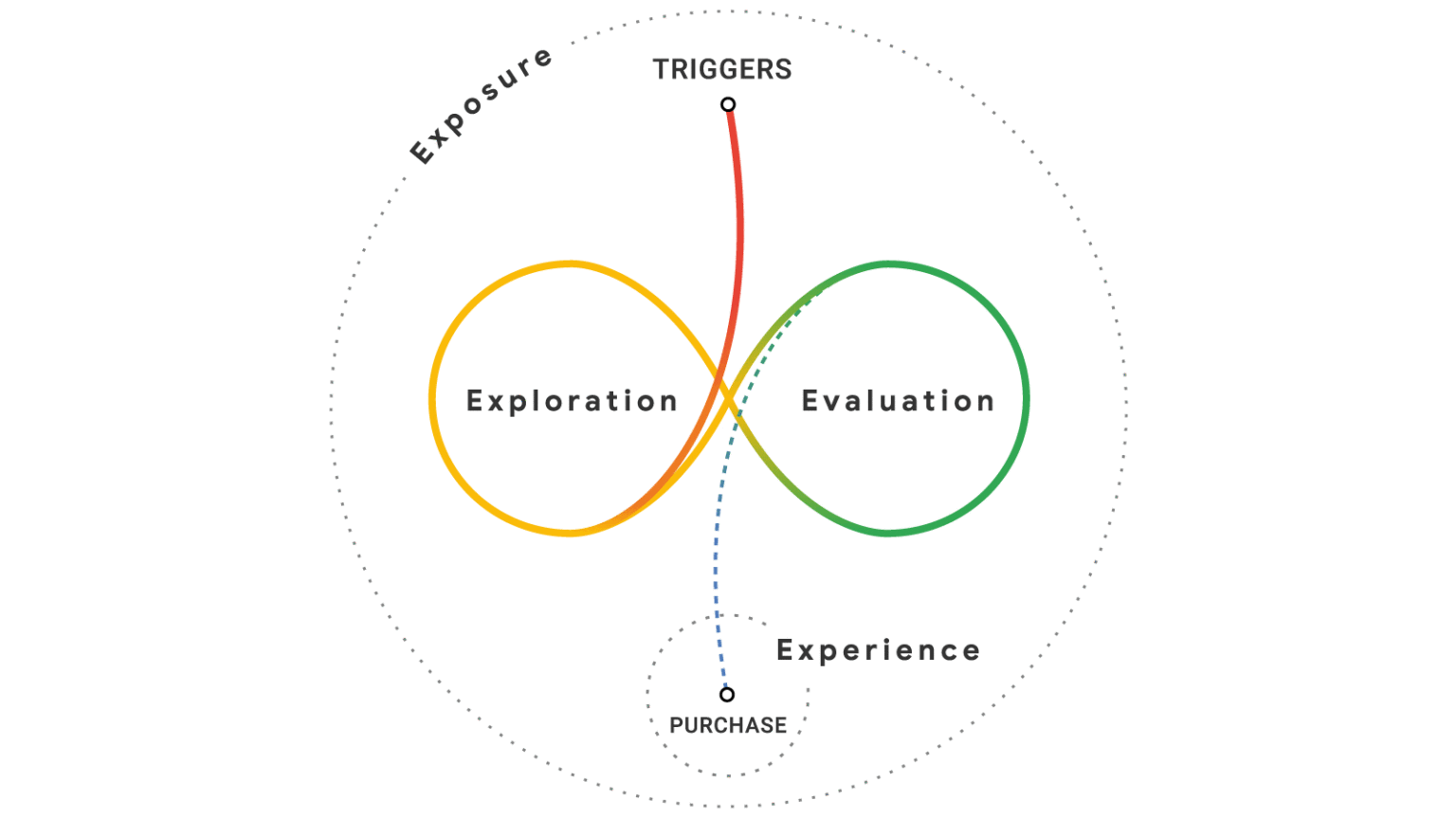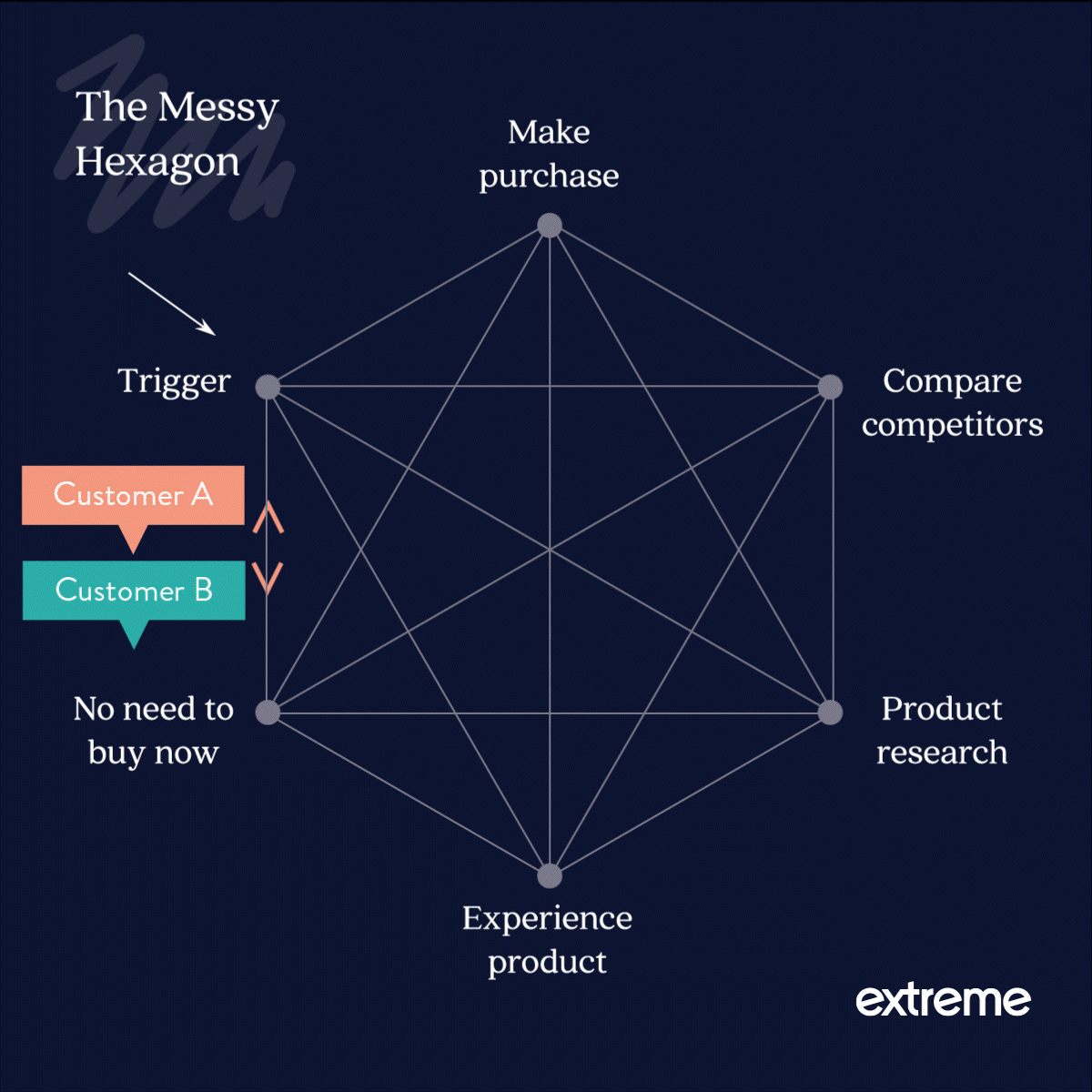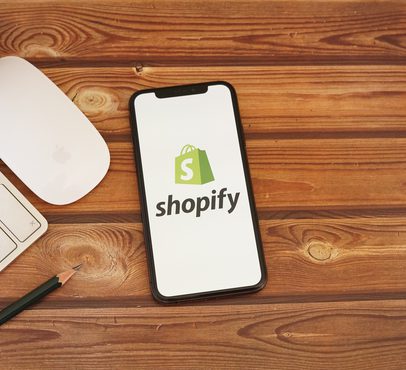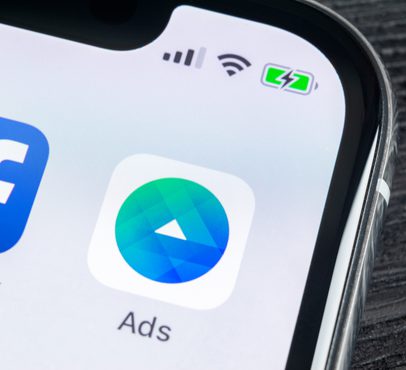Thought you knew what the sales funnel looks like? Think again.
We’re not even sure it’s a funnel any more. Despite being a cornerstone of marketing strategies for well over a century, our path to purchase doesn’t look the same as it did when the sales funnel was first introduced way back in 1898.
The digital landscape has changed the way we shop. With information at our fingertips — and a endless wave of e-commerce opportunities — sales can simply be a swipe away or may be a result of exhaustive research.
First let’s take a closer look at the sales funnel, more formally known as the AIDA model, and its principles.
The traditional sales funnel (AIDA model): time for a refresh?
Marketers are near-constantly talking about awareness, consideration and conversion. The sales funnel — also known as the AIDA model — is a time-honoured marketing fixture. It illustrates starting with a large cross-section of consumers, and refining them down to those all-important customers.
It provides the basis for many other concepts, including the marketing mix. It’s easy to follow and apply to a diverse range of business models and industries. It boils down to "I see it, I like it, I want it, I got it." (who knew Ariana Grande’s 7 rings was about the marketing industry?).
But it’s important to note that this concept is over 100 years old! It predates the internet and even television. Why are marketers still using the sales funnel?
Especially with recent changes to privacy and cookies impacting measurement, does the customer journey need a rethink?
Whilst the sales funnel is helpful for planning, it’s a little too simplistic and doesn’t quite reflect the reality of modern consumer behaviour. So, we’re shifting our mindsets to a different way of thinking.
An alternatives to the sales funnel
Tried and tested as it is, it might be time to retire the AIDA model. Having spent hours discussing trigger points, micro-moments and even the Marketing Eye, we concluded that we’re fans of Google’s the 'messy middle' and the Hankins Hexagon.
What is the Messy Middle?
The Messy Middle is a method of describing the space on the path to purchase that lives between the awareness and the action/purchase stage. It acknowledges that not everyone is ready to purchase now, but it doesn’t make their awareness any less worthy.
What is the Hankins Hexagon?
The Hankins Hexagon is an interpretation of the modern day consumer sales journey, devised by James Hankins.
Simply, It recognises there is no longer a structured sales funnel and instead a more complex and far less linear journey to purchase.
“A person can make their own way from A to Z any way they choose. In reality, there are very few ‘fixed’ pathways and most are two-way (feedback loops and changes of mind). This model posits that an individual can start wherever and eventually make their own way to purchase.”
Both of these models address the issues modern marketers face when navigating shoppers’ more complex path to purchase, looking at how a multitude of touchpoints interact with each other to help customers make decisions. Both have pros and cons when it comes to application, and so we decided a hybrid approach does the job best.
A new alternative to the sales funnel: introducing the Messy Hexagon
We took elements from these two concepts to provide to create the 'Messy Hexagon'. We think it captures the evolution of the marketing funnel and today’s consumer journey from awareness to purchase.
Prospective customers bounce between different stages of the buyer journey based on individual needs and interactions with your brand. They will interface with your marketing strategy via different platforms and devices at rapid speed, often out of the ‘traditional’ order we would expect them to follow. Sometimes, they will hit more than one touchpoint at a time.
Each customer will be different. Some will go straight from trigger to purchase, while others may take their time to 'get to know' your product or service. Some may interact with the brand when they don’t need the products, but remember it when they do and purchase at a later date when the occasion arises.
For this reason, it’s important not to analyse a channel or campaign’s results in silo, or as a direct return for the month your activity took place. Marketers should always be looking at the bigger picture, analysing how digital marketing activities as a whole and how it has contributed to sales and leads.
This isn’t a linear journey like we see in the sales funnel; it more accurately represents a modern, digital marketing strategy, and accounts for customer individuality.
New sales funnel model examples: how does the Messy Hexagon work in practice?
Designing a model is one thing, but applying it to real-life scenarios helps us to understand the role of each touch point, and where various marketing activities and strategies work best to result in a sale.
Booking a holiday
There can be many different trigger points to help you start the booking process. Firstly, have you even decided on when or where you want to go?
Customer A may interact with a 'cold' social media ad for a location they’ve never visited before, meaning that they interact with multiple points in the Messy Hexagon as they decide whether this destination or holiday company is the right fit for their needs.
They might not even have the annual leave booked yet, meaning they need to go away and return when they have dates in mind.
Whereas if Customer B has decided 'this year I want to go to Cornwall', their journey through the Messy Hexagon could be entirely different. They might search 'holidays in Cornwall', enter through a paid search result, look at dates and accommodation and book straight away.
If you were working as a travel agent in the more traditional sense, spending 20 minutes with Customer A and 10 minutes with Customer B may result in the same outcome — both would be considered a success from either angle.
It’s only because we’ve been spoiled with detailed reporting and analytics in digital marketing that we’ve developed a strong attachment to individual CPAs. If anything, putting more time into nurturing a sale can help increase the likelihood of a repeat booking — as long as they enjoyed their holiday to Cornwall, that is!
Although most of us wish we were booking holidays regularly, they’re more likely to be few and far between, and so we also wanted to explore how the Messy Hexagon would be applied in a more regular transactional sense.
E-commerce
In the FMCG world, the type of product on offer and type of trigger can impact how quickly a consumer travels through the hexagon. The speed of their path to purchase depends on how imminent their need is.
If a customer is buying a new smartphone, for example, they may spend longer lingering in the right-hand side of the hexagon, as they research the product in more detail.
Whereas in fashion e-commerce, a customer will likely have a prior understanding of their needs and style preferences, so product research will likely only take the form of 'how much is it?' and 'do they stock my size?'.
With this in mind, Conversion Rate Optimisation (CRO) is becoming increasingly important for brands marketing their goods and services online. Organic search, email and paid media can bring quantifiable traffic to your website, but if there are barriers to conversion on your site, then you could be missing out on revenue.
This is again why a holistic approach is important; rather than singling out an element of your marketing or funnel and saying 'it’s not working', or even eliminating it altogether, ask yourself 'why?'.
Having a thorough understanding of your audience, of your website’s analytics, and your Conversion Rate Optimisation (CRO) can help you understand if a dip in results is an anomaly or if it requires a bigger strategy rethink.
What role does consumer trust play in the Messy Hexagon?
Ultimately, your customer’s path to purchase is heavily impacted by the level of trust they have with the brand. You can segment their journey into pre and post-trust, applying different marketing tactics to each, helping to shape and streamline their experience and drive sales.
Traditionally, converting existing customers and community members is much easier than converting ‘cold’ leads, but privacy changes have complicated matters. Your ability to track users on your website, social media, emails, and the third party websites they visit has eroded over recent years due to updated privacy legislation from national governments and economic bodies, alongside more voluntary changes from corporations like Apple.
This means tracking individuals' behaviour online in the very personal way we’ve been used to for so long is going away, and is never to return. As such, connecting directly with your customers and allowing them to feel comfortable sharing some of their personal information with you is more important than ever.
We explore this topic further and how you can utilise other forms of data in our blog on navigating privacy changes.
With these changes, and continuing evolution of the digital world, applying different tactics at various points on the Messy Hexagon is paramount to driving sales.
Need some help developing a marketing strategy suited to these new ways of working? Drop a message to our team - experts when it comes to connecting you with your customers.
Take your e-commerce strategy to the next level
Get in touchPost by

Laura joined Team Extreme in 2017 and through the years has refined her social media skills to become our Paid Social Strategist. She works with our social clients to plan and execute content across a broad range of sectors and channels, helping clients maximise their results and ROI.
Project
Post by

Lucie is our lead on all paid media activity, overseeing our talented paid media team and managing the strategy and implementation of all paid search campaigns across multiple platforms. Fully Google qualified and working directly at Google prior to joining Extreme, there's not much Lucie doesn't know about PPC!
Project
